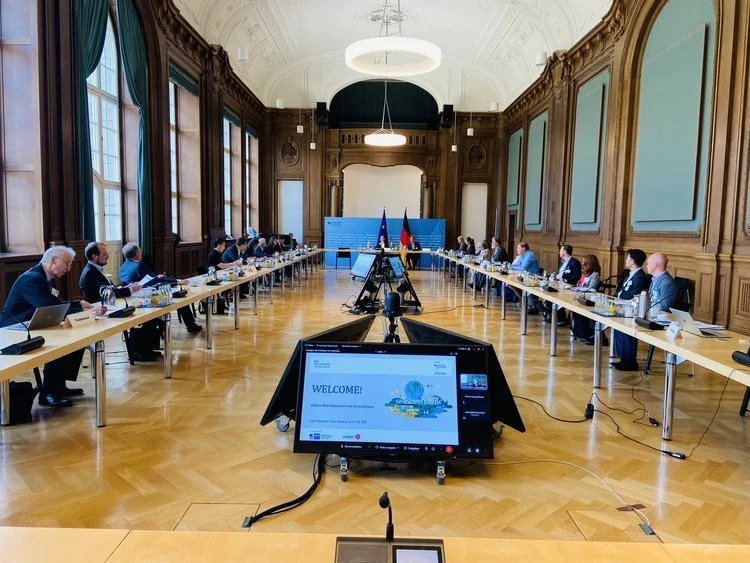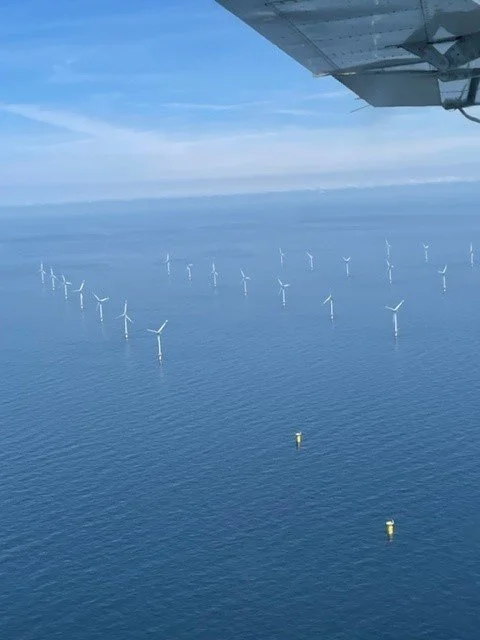Offshore Wind Deployment in the U.S. and Germany: Lessons Learned from Expert Delegation Trip to Germany and Bilateral Knowledge Exchange
NYOWA Director Fred Zalcman joins a delegation of U.S representatives to Germany, at the invitation of the Federal Ministry for Economic Affairs and Climate Action, organized by the German Renewable Academy.
By Fred Zalcman
This June, I had the privilege of joining a delegation of U.S representatives to Germany, at the invitation of the Federal Ministry for Economic Affairs and Climate Action, and organized by the German Renewable Academy, for a dialogue on our shared interest in the global development of offshore wind. This meeting comes on the heels of the Biden Administration Special Envoy, John Kerry’s, recent visit to Germany for the G7 Climate, Energy, and Environment Ministerial meeting, where the two countries signed a joint declaration of partnership in the development of offshore wind and hydrogen. The U.S. contingent reflected a wide range of stakeholders, including representatives from the grid operators, state and federal regulators, economic development authorities, environmental NGO’s, and academic and research and development institutions.
Germany was one of the first movers on offshore wind development and has now installed nearly 8 GW. Like the U.S., it has ambitions to support 30 GW. However, propelled by an overriding concern that nations must do more to address climate change, the recent crisis in Ukraine and the desire to wean itself off its dependence on Russian fossil fuels, the German government is finalizing plans to develop as much as 80 GW by 2045. Along with these targets, Germany is exploring new procurement models to expedite development and to recognize that the cost of offshore wind development has now reached the point where no subsidies are required.
As the German market matures and evolves, we in the U.S. would do well to consider and adapt German policies that appear to work well, and to avoid costly mistakes that hindered past efforts. And some best practices in the U.S. may be worthy of emulation by our German friends. Some of the impressions and takeaways for me include:
Flying over the North Sea windfarm.
Siting and permitting. One of the hallmarks of the German system has been the auctioning of “pre-developed sites”, where effectively the government has done all the site investigation and assessment ahead of the site allocation, and the lease sale and offtake authorization are combined in a single process. This shifts much of the commercialization and permitting risk and cost off the developer. However, the German government is now experimenting with a parallel track for non- predeveloped sites, shifting the onus for survey work onto the successful developer, in a bid to expedite the process. This has interesting echoes of the debate around the best system in the U.S. for wind energy area lease allocation.
Procurement best practices. As noted above, Germany is establishing a “beauty contest” relying on non-price factors in the assignment of at least some of its new wind energy areas. This moves Germany closer to the U.S. model, which has historically relied at least in part on factors such as environmental performance, local economic development commitments, and project viability to assess projects. This U.S. experience can be mined by our German counterparts.
Moving to a zero-subsidy regime. One of the key issues German policymakers are wrestling with is how to allocate lease areas now that offshore wind has reached market parity and price is no longer a differentiator. Interestingly, the developers’ economic development plans and local content commitments do not appear to be one of the factors the German government will look to. This is very different from the U.S. market, where local content is often the deciding factor. Notwithstanding this a very robust German supply chain has emerged to meet the countries (and Europe’s) overall goals. This bears watching.
Scaling global supply chain. There are growing concerns with whether the global supply chain can keep pace with the ramp-up in OSW ambitions set by state and federal governments. Efforts must be taken on a state, national and trans-national level to remove trade barriers that inhibit the deployment of scarce resources across boundaries.
Transmission development. As in the U.S., German offshore wind development will entail a massive build out of the grid, both offshore and onshore, to move power from the North and Baltic Seas to the industrial load centers to the south. I was struck by how tightly coordinated transmission planning and development is with national offshore wind goal setting – much more so than in the U.S. – to assure that transmission will not be a bottleneck to development. Transparency around the timing of completion of transmission development, backed by financial penalties, helps avoid the risk of generation being stranded.
Hydrogen as a growth engine. Both Germany and the U.S. are focusing increasing policy attention to the development of green hydrogen as a means of achieving carbon reduction in challenging sectors like heavy transport. Early-stage pilot projects are underway.
I would venture to say that both the U.S. delegation and our German counterparts profited greatly from this exchange of knowledge and information, and we would do well to continue to experiment with policy and market mechanisms as we seek to accelerate the world’s development of offshore wind in the most expeditious and cost-effective manner.




